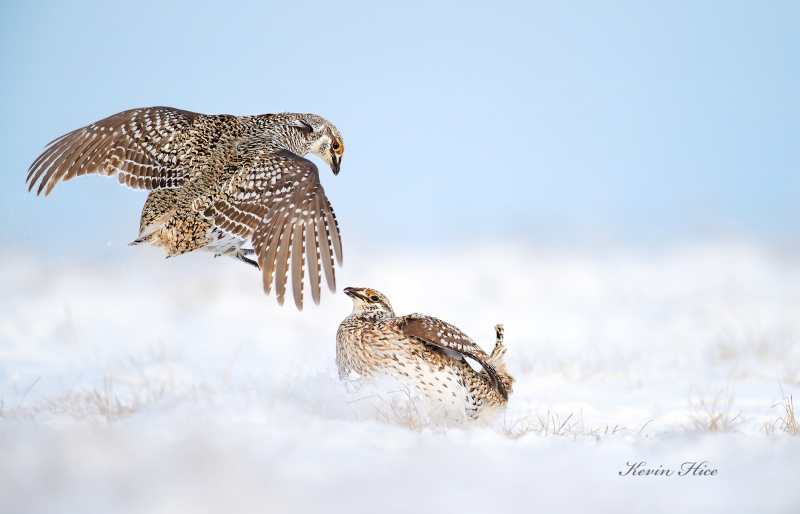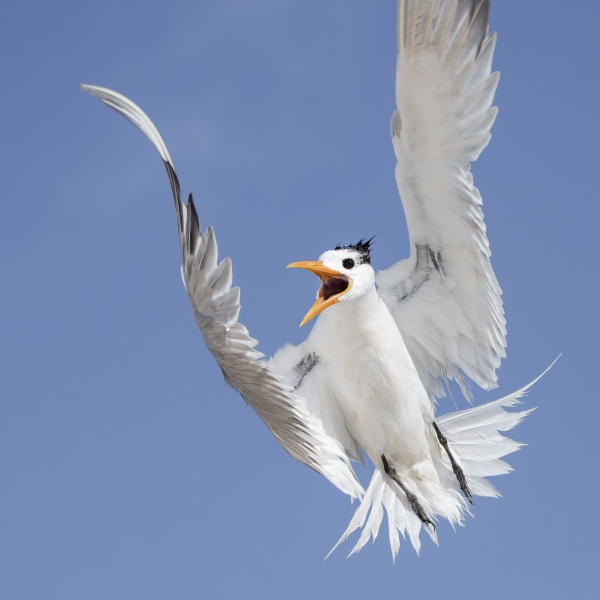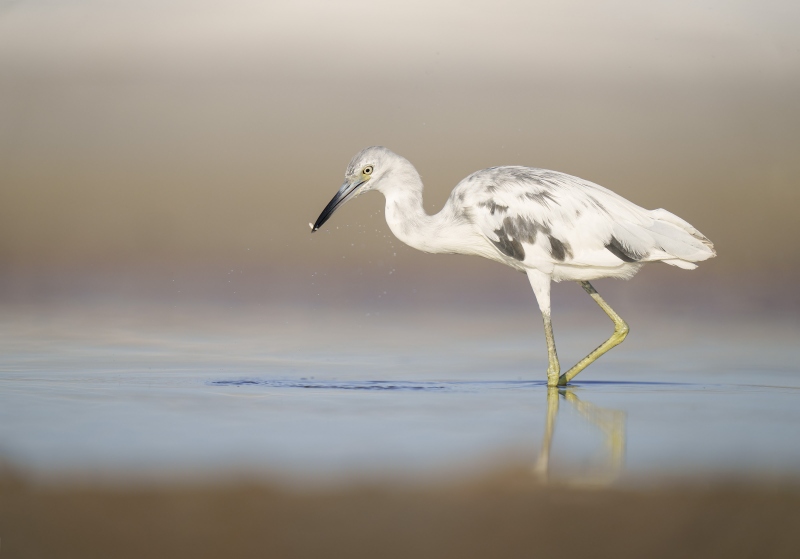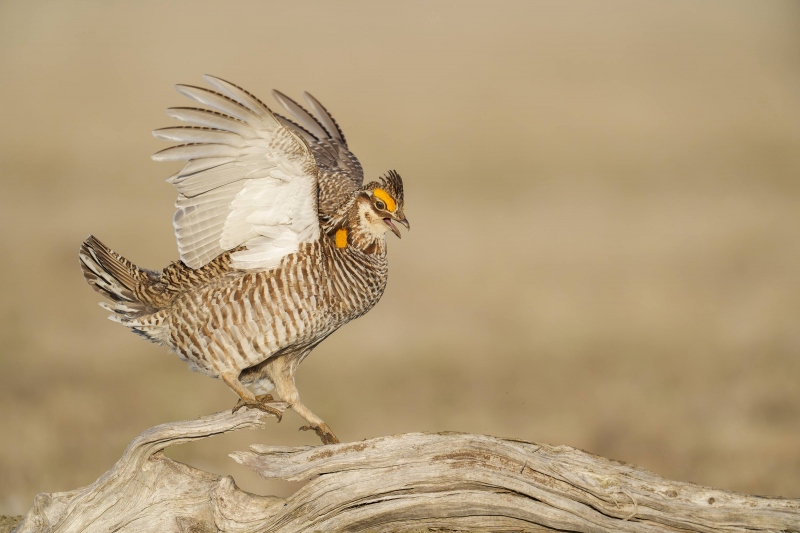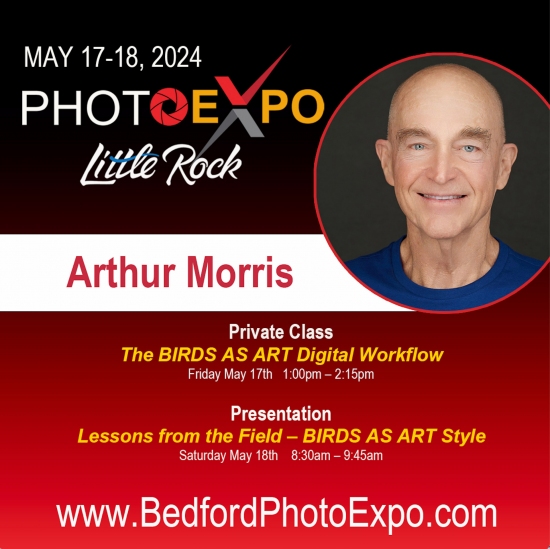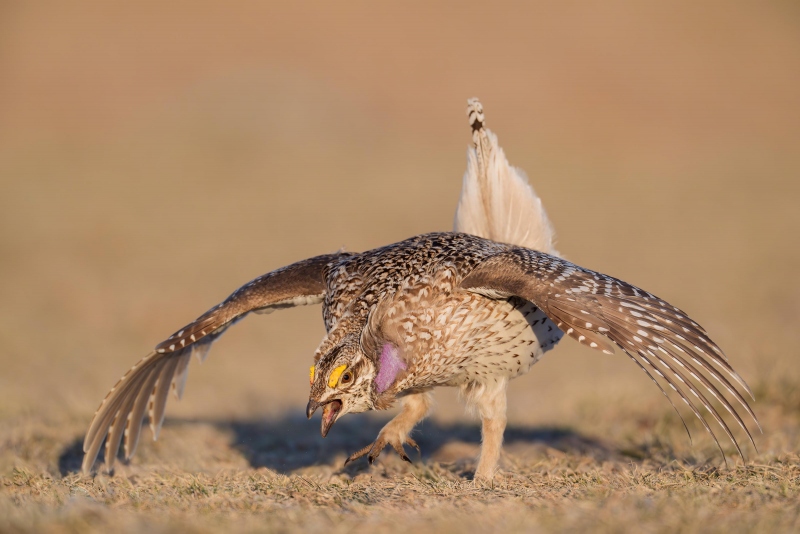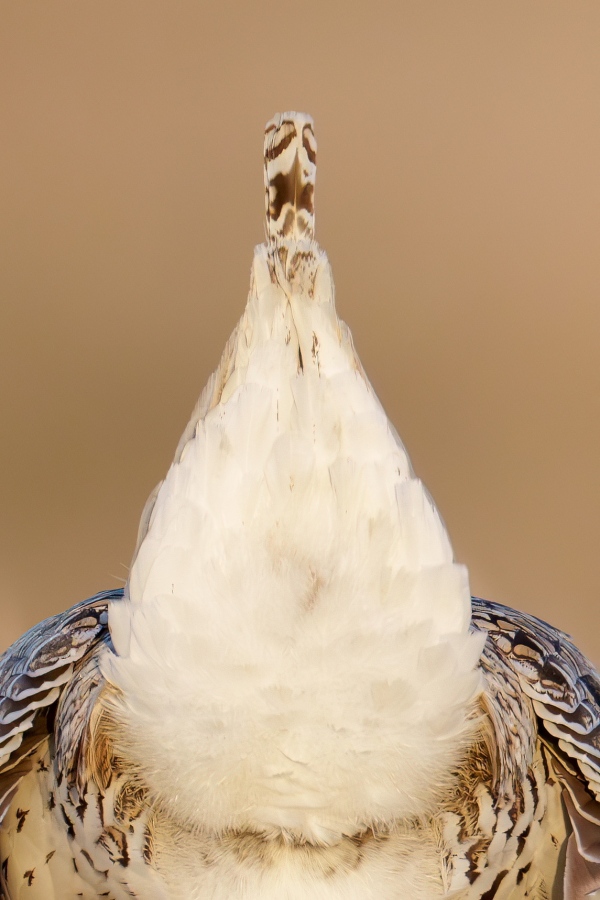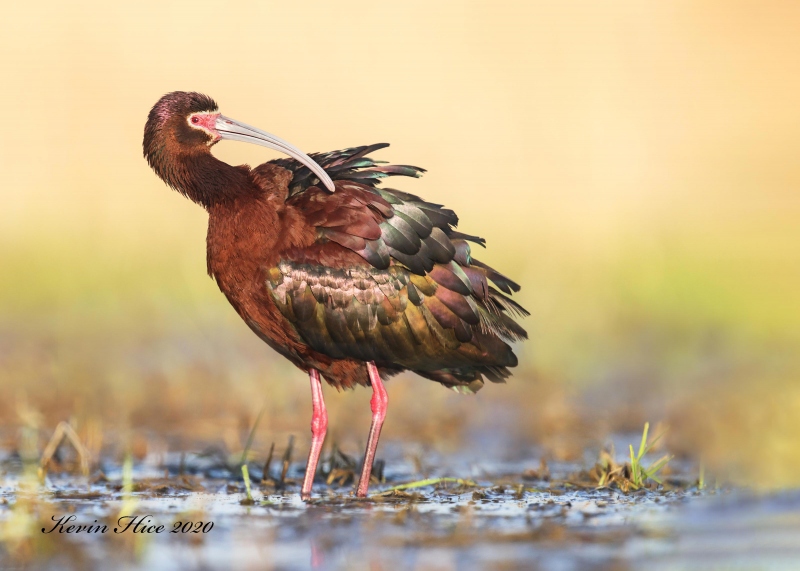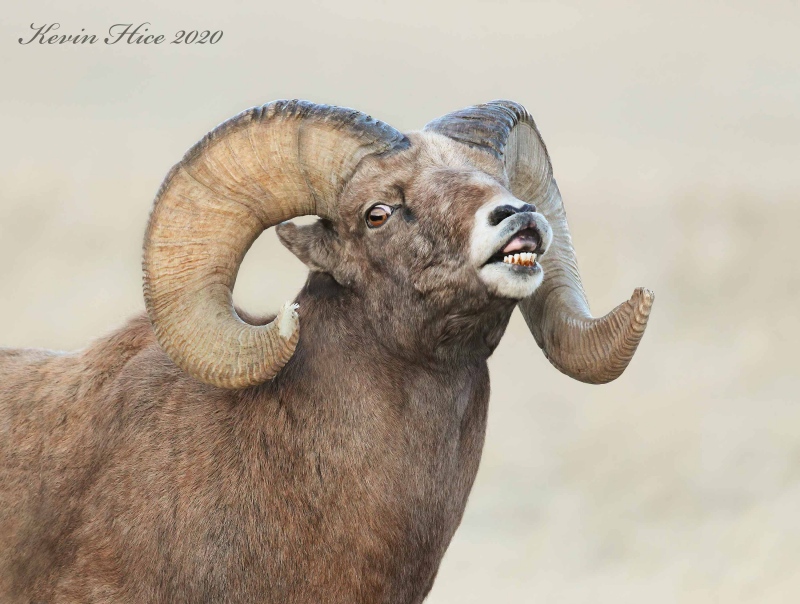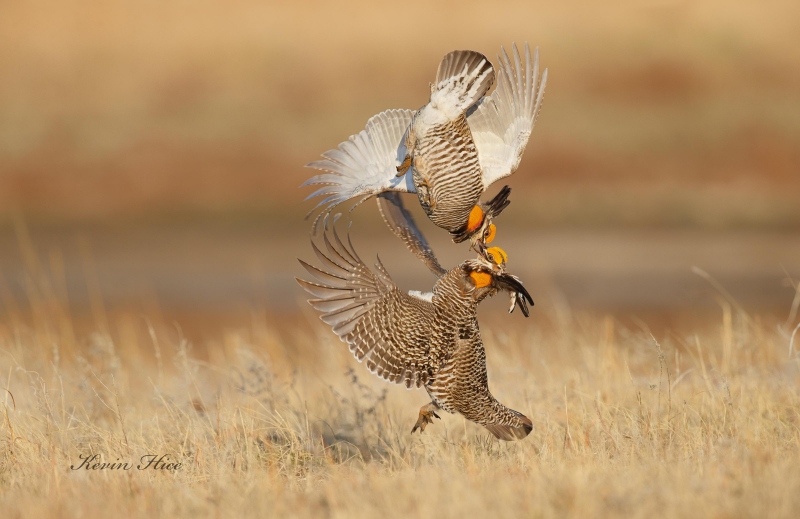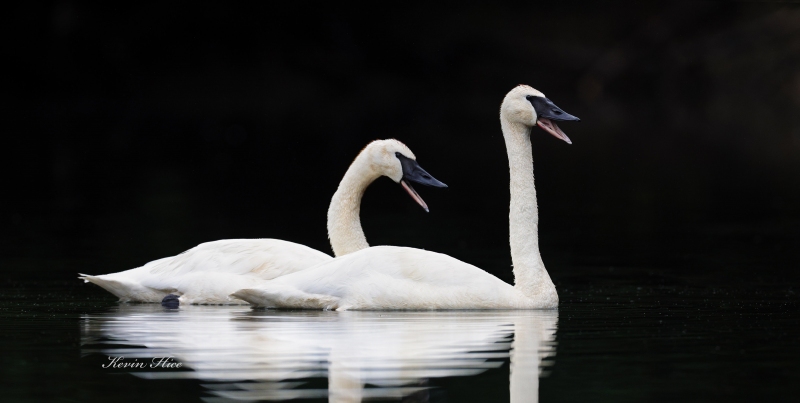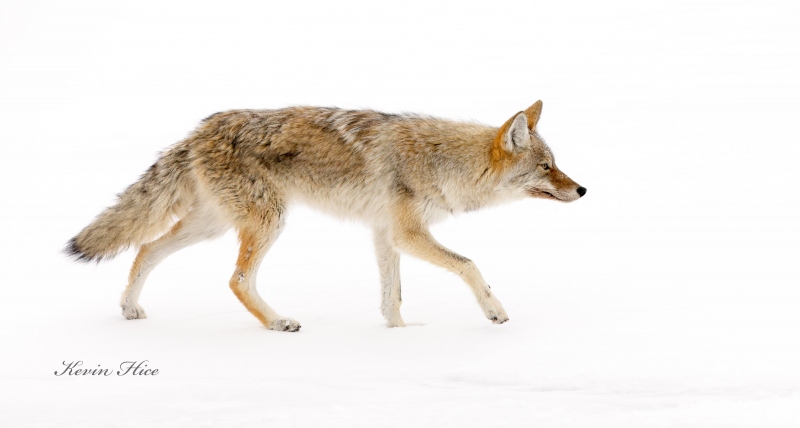April 22nd, 2024 Supporting My Efforts Here
If you enjoy and learn from the blog, please consider using one of my affiliate links when purchasing new gear. To support my effort here, please order from B&H by beginning your search here. Or, click here to order from Bedfords and enter the discount code BIRDSASART at checkout to receive 3% cash back to your credit card and enjoy free Second-Day Air Fed-Ex shipping. It is always best to write for advice via e-mail.
In many cases, I can help you save some serious dollars.
Live Life to the Fullest
Join an Instructional Photo-Tour.
What’s Up
We had another good (but too cold) morning with the Sharp-tailed Grouse. I learned that the Greater Prairie Chickens are only a bit larger than the sharp-taileds. The latter are surely faster and more frenetic than the GPCs. We are moving to a new lek tomorrow as there were too many birds and too many rocks on the one we have been working.
Today is Monday 21 April 2024. We will be up early and heading to a new sharp-tailed lek. Whatever you opt to do, I hope that you too have a ton of fun.
If you plan on purchasing a Sony a9 III Mirrorless Camera (or anything else for that matter), please remember to use or write for either my Bedfords discount code or my B&H affiliate link. Folks who use one of my two affiliate links to purchase the a9 III will receive my .DAT settings (the complete camera set-up) along with a Buttons and Dials Guide.
Please remember to use the B&H links that are found on most blog pages and to use the BIRDSASART discount code at checkout when purchasing your new gear from Bedfords to get 3% back on your credit card and enjoy free second-day air FedEx. Please, also, consider joining a BAA IPT. You will be amazed at how much you will learn!
If an item — a Delkin flash card, or a tripod head — for example, that is available from B&H and/or Bedfords, is also available in the BAA Online Store, it would be great, and greatly appreciated, if you would opt to purchase from us. We will match any price. Please remember also to use my B&H affiliate links or to earn 3% cash back at Bedfords by using the BIRDSASART discount code at checkout for your major gear purchases. Doing either often earns you free guides and/or discounts. And always earns my great appreciation.
|
|
|
This image was created on 22 March 2024 in North Dakota by good friend and multiple IPT veteran Kevin Hice. He used the tripod-mounted Canon RF 600mm f/4 L IS USM Lens, an Canon Extender RF 1.4x, and the Canon EOS R5 Mirrorless Camera. ISO 2000: 1//3200 sec. at f/4 in Manual mode.
Be sure to click on the image to see a larger and sharper high res version.
Image #6: Sharp-tailed Grouse fighting
Image courtesy of and copyright 2024: Kevin Hice
|
Kevin Hice
In the Canon Shooter Kevin Hice is One Smart, Tough, Hardworking, Determined Guy and One Fine Photographer here, I wrote: All are invited to leave a comment on the quality of Kevin’s images. Please let him know which of his images you like best and why you like them.
I feel that each of Kevin’s images is of outstanding artistic and technical quality. My very favorite was Image #6, the Sharp-tailed Grouse fighting image above. I appreciate that one even more since trying to photograph them on Saturday morning! Next up for mw was the beautiful Bighorn Sheep ram, Image #2.
|
|
|
This image was created on 29 June 2021 at Huguenot Memorial Park on a Jacksonville, FL IPT. Standing at full height I used the handheld Sony FE 200-600mm f/5.6-6.3 G OSS lens (at 200mm) and The One, the Sony Alpha 1 Mirrorless digital camera. ) The exposure was determined using Zebra technology with ISO on the Thumb Dial. ISO 640. 1/3200 second at f/7.1 (stopped down 2/3-stop) in Manual Mode. AWB at 9:16:26am on a sunny morning. RawDigger showed the exposure to be dead solid perfect.
Tracking: Zone AF-C with Bird Face/Eye Detection performed perfectly. Be sure to click on the image to enjoy a high-res version.
Image #1: Royal Tern screaming in flight
|
Square Crops
In the It’s Not Always Easy to Get it Exactly Right in Bird Photography. What Do You Think of Square Crops? And How are Those Two Related? blog post here, I far preferred Image #1 above, to Image #2 because of the neat expression on the tern’s face. Not everyone agreed. As far as square crops in general, I am fine with them. Each of us is the artist, we get to do what we think is best with our images. I try to avoid boxy crops, but will not hesitate going that route when I think that it is best for the image. In the same vein, some images shine with a pano crop.
Best of all, square crops can be used to salvage images where one or two wings have been clipped. And the results are often quite excellent.
|
|
|
This image was created on 9 MAY 2023 on a DeSoto IPT. While seated on damp sand, I used the toe-pod technique with the handheld the Sony FE 400mm f/2.8 GM OSS lens
the Sony FE 1.4x Teleconverter, and The One, the Sony Alpha 1 Mirrorless Digital Camera). The exposure was determined via Zebra technology with ISO on the Thumb Dial. ISO 640. 1/5000 sec. at f/4 (wide open) in Manual mode. When evaluated in RawDigger, the exposure was determined to be dead solid perfect. AWB at 8:19:38am on a sunny morning.
Tracking: Zone/AF-C with Bird Face/Eye detection enabled performed to perfection. Be sure to click on the image to enjoy a high-res version.
Image #1: Little Blue Heron with tiny baitfish
|
DeSoto in Spring
In the Fort DeSoto May Highlights Part I — It’s Not Too Late! blog post here, my favorite image by a slim margin was the pied Little Blue Heron. I love the soft color tones, the sweet light, the low perspective, the beautiful and somewhat unusual plumage, the tiny fish, and the perfect head angle. Four of the five images received mention as being the strongest.
Ah, the Miracle of the Low Perch!
In the Greater Prairie Chicken Miracles Can Happen! blog post here, my favorite by a small margin was #4. I was thrilled the day after we put the perch in place that so many birds obliged us. its #4, my only wish was a complete view of the far foot.
Typos
With all blog posts, feel free to e-mail or to leave a comment regarding any typos or errors.
April 21st, 2024 Supporting My Efforts Here
If you enjoy and learn from the blog, please consider using one of my affiliate links when purchasing new gear. To support my effort here, please order from B&H by beginning your search here. Or, click here to order from Bedfords and enter the discount code BIRDSASART at checkout to receive 3% cash back to your credit card and enjoy free Second-Day Air Fed-Ex shipping. It is always best to write for advice via e-mail.
In many instances, I can help you save some serious dollars.
Live Life to the Fullest
Join an Instructional Photo-Tour.
What’s Up?
It was as cold as promised on Saturday morning. I was dressed to the max and did not get really cold until we got out of the blinds at about 8:20am. The increasing wind was the culprit. Tomorrow morning is again looking at a frosty 24° F.
Today is Sunday 21 April 2024. We will again be headed early to two different sharp-tailed leks. Whatever you are doing, be sure to have fun.
If you plan on purchasing a Sony a9 III Mirrorless Camera (or anything else for that matter), please remember to use or write for either my Bedfords discount code or my B&H affiliate link. Folks who use one of my two affiliate links to purchase the a9 III will receive my .DAT settings (the complete camera set-up) along with a Buttons and Dials Guide.
Please remember to use the B&H links that are found on most blog pages and to use the BIRDSASART discount code at checkout when purchasing your new gear from Bedfords to get 3% back on your credit card and enjoy free second-day air FedEx. Please, also, consider joining a BAA IPT. You will be amazed at how much you will learn!
If an item — a Delkin flash card, or a tripod head — for example, that is available from B&H and/or Bedfords, is also available in the BAA Online Store, it would be great, and greatly appreciated, if you would opt to purchase from us. We will match any price. Please remember also to use my B&H affiliate links or to earn 3% cash back at Bedfords by using the BIRDSASART discount code at checkout for your major gear purchases. Doing either often earns you free guides and/or discounts. And always earns my great appreciation.
|
|
Join me in Little Rock, Arkansas this May for a great weekend of learning and fun. You can check out any and all of the latest/greatest photo gear. If you know any good nearby spots for bird photography, and/or if you would like a free (5-image) portfolio review, shoot me an e-mail.
|
Little Rock Photo EXPO
A Bedford Event: Inspire, Learn, Discover
HUGE TWO DAY INTERACTIVE TRADE-SHOW
May 17-18, 2024
State House Convention Center
101 E. Markham St., Little Rock, Arkansas
Don’t miss the Photo Expo in Little Rock! Regardless of your experience level, join hundreds of photographers, as we take over Little Rock on May 17-18, 2024. The Little Rock Photo Expo offers a remarkable experience packed with presentations, hands-on demonstrations, and a massive trade show featuring all the major photographic companies. Explore the latest gear, trade in your old camera equipment, and gain valuable insights from our experts. Get up close and personal with world-renowned keynote speakers and seize countless unique photo opportunities. Bring your camera and get ready for a weekend of fun, learning, and inspiration to elevate YOUR photography to new heights.
Click here to learn more and follow the links to see the schedule of events and/or register. Use this discount code at checkout to save $20.00: VIPEXPO24.

Save 15%!
If you’d like to try out a new lens or if you need a lens for a specific trip or project (or for an IPT), LensRentals.com is the only way to go. To save 15%, simply click on the logo link above, arrange for your rental, and type in BIRDSASART15. If you type the gear you are looking for in the search box, it will pop right up. LensRentals.com offers affordable insurance. You can decline it, opt for LensCap: Damage Only, or select LensCap: Damage & Theft. Then hit PROCEED TO CHECKOUT. After you enter all of your info but before completing your order, be sure to scroll down to Promo Code box and enter the BIRDSASART15 code to save 15%.
I checked on renting a Sony FE 70-200mm f/2.8 GM OSS II lens for a week. The cost is only $122.00. LensCap: Damage Only coverage can be added for a very low $18.00. Going with LensCap: Damage & Theft would be $27.00. The shipping charge varies. They offer an interesting program called Lensrentals HD. By signing up for this shipping discount program ($99.00/year), you’ll get free Standard Shipping on all the orders you place.
Renting a Sony 600mm f/4 GM OSS lens for a week will cost you $536.00. The two coverage options come in at $76.00 or $114.00. Less your 15% discount when you enter the BIRDSASART15 code into the Promo Code box at checkout and enter the BIRDSASART15 code in the Promo Code box at checkout to save 15%.
Remember, to save the 15% on your rental you must start your search by clicking on the logo above, or on this link: LensRentals.com


B&H
To ensure that I get credit for your B&H purchases, you can always click here. The tracking is invisible but greatly appreciated. And, you can use your PayBoo card. You must use the website to order. B&H will reopen on Fri April 14. Thanking me for the past 4000 educational blog posts could not be any easier and will not cost you one penny. Please shoot me your B&H receipt for major purchases.
Many folks have written recently stating that they purchased a Sony a1 from B&H and would like their free membership in the Sony 1 Info and Updates Group, a $150.00 value. When I check my affiliate account, their orders have not been there. When I let them know that they get credit for B&H purchases only if they use one of the many B&H affiliate links on the blog or begin their searches with this link, they are always disappointed. If in doubt, please contact me via e-mail and request a BH link. I am always glad to help and to guide you to the right gear.
Bedfords Simplified
Click here to start your search. Choose standard shipping, and when you get to the payment page, enter BIRDSASART in the discount code box and hit apply. You will be upgraded to free second day air Fed-Ex and receive 3% cash back on your credit card once your stuff ships. Either is greatly appreciated by yours truly.
Bedfords Amazing BAA Discount Policy
Folks who have fallen in love with Bedfords can now use the BIRDSASART coupon code at checkout to enjoy a post-purchase, 3% off-statement credit (excluding taxes and shipping charges) on orders paid with a credit card. The 3% credit will be refunded to the card you used for your purchase. Be sure, also, to check the box for free shipping to enjoy free Second Day Air Fed-Ex. This offer does not apply to purchases of Classes, Gift Cards, prior purchases.
Visit the Bedfords website here, shoot Steve Elkins an e-mail, or text him on his cell phone at (479) 381-2592.
Gear Questions and Advice
Too many folks attending BAA IPTs and dozens of photographers whom I see in the field and on BPN, are — out of ignorance — using the wrong gear, especially when it comes to tripods and more especially, tripod heads. And the same is true in spades when ordering new camera bodies or lenses. My advice will often stave you some serious money and may help you avoid making a seriously bad choice. Please know that I am always glad to answer your gear questions via e-mail. If you are desperate, you can try me on my cell at 863-221-2372. Please leave a message and shoot me a text if I do not pick up.
Like Trying to Photograph a Herd of Frenetic Mice!
The sharp-tailed lek was tiny compared to the huge Greater Prairie Chicken lek that we photographed on near Pierre, SD. It is perhaps 20 yards wide by 30 yards deep. With more than 30 birds in such a small place, there were often too many birds in the frame, along with too many rocks. The GPCs in SD were spread out over many, many acres. That was the largest lek Kevin has ever seen. Since there were so many obstacles on the sharp-tailed lek this morning, framing a clean shot was difficult.
Not to mention that the Sharp-tailed Grouse are smaller and much faster moving than the Greater Prairie Chickens. When they display, the air sac is purple and smaller than the yellow/orange sac in GPC. Two male sharp-tails will often sit down on the prairie facing each other for minutes at a time before exploding into battle. As there were many birds on the lek at close range, Anita and Kevin were, for the most part, using shorter focal lengths than I was — 300mm and 400mm respectively. Seeing too many birds and too many rocks I quickly went to 840mm for greater isolating power and a lower angle of declination. In addition, I was able to get beyond the shadow of the blind and work birds at the back of the lek.
Working with both the a1 and the a9 iii on Saturday morning, I created 3675 Sharp-tailed Grouse images. After a second edit that afternoon, I wound up keeping only 28 raw files. That works out to .0076% keepers, less than 1%. Talk about challenging photography.
Don’t Try This With Your Sony a9 iii
Image #2 represents slightly less than 4% of the pixels in the original capture. Sharp a1 images can stand up to relatively huge crops. I routinely execute small crops with my a9 iii images, but would never attempt anything like this.
Aptly Named
Sharp-tailed Grouse has a white-edged, wedge-shaped tail with two long central feathers that give it an elongated, spiky appearance. I actually rescued the raw file for this image from the trash. I brought up the detail in the WHITEs with a 15% linear burn layer after reducing the YELLOW Saturation.
Typos
With all blog posts, feel free to e-mail or to leave a comment regarding any typos or errors.
April 20th, 2024 Supporting My Efforts Here
If you enjoy and learn from the blog, please consider using one of my affiliate links when purchasing new gear. To support my effort here, please order from B&H by beginning your search here. Or, click here to order from Bedfords and enter the discount code BIRDSASART at checkout to receive 3% cash back to your credit card and enjoy free Second-Day Air Fed-Ex shipping. It is always best to write for advice via e-mail.
In many cases, I can help you save some serious dollars.
What’s Up?
It is 6:30pm on Friday 19 April 2024 as I type. It is cold and very windy. We are headed out to position the blinds as that would be impossible to do in the dark tomorrow morning. The wind is supposed to finally abate tonight (good) but it is supposed to be 24° F in the morning (bad). We got all three blinds in place and were headed back to Kevin’s place exactly at 9:00pm as Kevin had planned. We said blessings over the blinds hoping that they would not blow away before morning ,,,
Before that, again thanks to the high winds, Friday was another day of Photoshop, of rest, and of too much eating.
Today is Saturday 20 April 2014. We’ll be leaving for two of Kevin’s local sharp-tailed leks at 5:30am. I gotta get to bed soon. Whatever you are doing today, I hope that you too opt to have fun.
|
|
|
This image was created on 8 May 2020 in North Dakota by good friend and multiple IPT veteran Kevin Hice. He used the tripod-mounted Canon 500mm f/4L IS II lens, a 1.4X III TC, and the Canon EOS-1D X Mark III. Evaluative metering +0.7 stop in Aperture Priority (AV mode). ISO 1600: 1/2500 sec. at f/7.1.
Be sure to click on the image to see a larger and sharper high res version.
Image #1: White-faced Ibis in breeding plumage
Image courtesy of and copyright 2020: Kevin Hice
|
Kevin Hice
Kevin was born in Cincinnati, OH in 1954. He spent most of his time in the woods and by the creeks near his home, searching for box turtles and salamanders. He thought about photographing nature in his late thirties but with not wanting to have to deal with film and having kids to take care of, his interest was postponed. When I did a seminar for the Photographic Society of Chattanooga, Kevin attended and was smitten. He bought a Canon 300mm f/2.8 and a 5D Mark II and was off to the races. He had signed up for a SW Florida IPT soon afterwards, but a huge ice storm in Atlanta put the kibosh on those plans. He says, ” I would have gotten a lot better a lot faster if I had made that one. He attended a Homer IPT in 2022 — created more than 25,000 images during a single morning session. He often recommends that his Canon friends purchase my EOS R5/R6 Camera Users Guide but they always respond, “What do I need that for?” He credits me with finally learning to expose far to the right and thus greatly reducing noise. Kevin has been a member of Bird Photographer’s.Net since 2013. To this day, he posts often in BPN’s Avian Forum. At first he was intimidated, but persevered and received tons of advice, especially with Photoshop. He singles out Andreas Liedmann of Dortmund, Germany as having been exceedingly helpful. Kevin says, ‘Had I not joined BPN, it would have taken me many more years more to get to where I am today.”
Kevin has lived in Ohio, Indiana, Nebraska, North Dakota, and California. He has enjoyed two distinctly different careers: he was a welder (in a nuclear power plant!) for a decade and followed that up with 30 years as a nurserymen. Now retired, Kevin is a world class falconer who hunts his two gyr/Peregrine hybrids with his sleek and beautiful English Pointer Sage. You have never seen a dog run as fast or as far as Sage. He is now living with His significant other, Colleen, Parrill in Washburn, ND. They will be moving to a beautiful new home on a spacious natural lot outside of Indianapolis Indiana.
All are invited to leave a comment on the quality of Kevin’s images. Please let him know which of his images you like best and why you like them.
Nothing for Me …
I am especially envious of Image #1 because I have nothing at all on breeding plumage Glossy Ibis, the eastern conspecific species of white-faced.
|
|
|
This image was created on 12 November 2020 in Badlands National Park, South Dakota by good friend and multiple IPT veteran Kevin Hice. He used the tripod-mounted Canon 500mm f/4L IS II lens, a 1.4X III TC, and the Canon EOS-1D X Mark III. Evaluative metering +0.7 stop in Aperture Priority (AV mode). ISO 6400: 1/640 sec. at f/7.1.
Be sure to click on the image to see a larger and sharper high res version.
Image #2: Bighorn Sheep ram (flehmen response)
Image courtesy of and copyright 2020: Kevin Hice
|
Flehmen Response
Flehmen Response: (from German flehmen, to bare the upper teeth, and Upper Saxon German flemmen, to look spiteful), also called the flehmen position, flehmen reaction, flehmen grimace, flehming, or flehmening, is a behavior in which an animal curls back its upper lip exposing its front teeth, inhales with the nostrils usually closed, and then often holds this position for several seconds. The primary function of the flehmen response is intra-species communication. By transferring air containing pheromones and other scents to the vomeronasal organ (VNO), an olfactory-chemosensory organ located between the roof of the mouth and the palate, animals can gather chemical “messages”.
What’s Not to Like?
I love the ram’s attitude and the lovely clean background. If I remember, Kevin got lost of help in BPN’s Wildlife Forum when optimizing this one. It turned out great.
|
|
|
This image was created on 9 April 2012 in the Nebraska Sandhills by good friend and multiple IPT veteran Kevin Hice. He used the tripod-mounted Canon 500mm f/4L IS II lens, a 1.4X III TC, and the Canon EOS-1D X Mark III. Evaluative metering +0.7 stop in Aperture Priority (AV mode). ISO 1600: 1/3200 sec. at f/7.1.
Be sure to click on the image to see a larger and sharper high res version.
Image #3: Greater Prairie Chickens fighting on lek
Image courtesy of and copyright 2021: Kevin Hice
|
Addicted
Kevin has long been addicted to game birds, the prairie chickens and the Sharp-tailed Grouse. He lusts for a decent Sage Grouse lek. He routinely arises way too early even for me in order to get in a blind to photograph his favorite subjects at least 45 minutes before sunrise. He is good at what he does and I will be forever thankful for his invite as the Greater Prairie Chickens were a first for me and tomorrow should be my first time with the sharp-taileds (if our blinds do not blow away overnight …)
Thanks, Kevin. And we still have almost a week to go!
|
|
|
This image was created on 28 July 2022 in Haines, AK by good friend and multiple IPT veteran Kevin Hice. He used the tripod-mounted Canon RF 600mm f/4 L IS USM lens and the Canon EOS R3 Mirrorless Camera. ISO 3200: 1//2500 sec. at f/6.3 in Manual mode.
Be sure to click on the image to see a larger and sharper high res version.
Image #4: Trumpeter Swan pair
Image courtesy of and copyright 2022: Kevin Hice
|
Sicker than Sick
Kevin had COVID when he created this image. He had pulled a trailer all the way to AK in hopes of photographing Brown Bears (grizzles). As he and Colleen drove into Haines, Kevin spotted a pair of Trumpeter Swans in a small pond. He grabbed his gear, lay face down on a rocky slope, and photographed the pair for an hour. He finished the session squatting in three feet of cold water in order to get low. The good news is that he did not die.
|
|
|
This image was created on 4 December 2022 in Yellowstone National Park, Montana by good friend and multiple IPT veteran Kevin Hice. He used the handheld Canon RF 600mm f/4 L IS USM lens and the Canon EOS R3 Mirrorless Camera. ISO 3200: 1//4000 sec. at f/6.3 in Manual mode.
Be sure to click on the image to see a larger and sharper high res version.
Image #5: Coyote in snow
Image courtesy of and copyright 2022: Kevin Hice
|
Smart Always Works
Kevin was driving his truck around Yellowstone in search of subjects when he spotted this coyote walking along a small river right towards him. He grabbed his gear, and using his truck as a blind, hid behind it. The beautiful animals in a pristine setting walked by him. With a combination of good spotting and excellent photographic and field skills, Kevin was justifiably rewarded.
|
|
|
This image was created on 22 March 2024 in North Dakota by good friend and multiple IPT veteran Kevin Hice. He used the tripod-mounted Canon RF 600mm f/4 L IS USM lens and the Canon EOS R5 Mirrorless Camera. ISO 2000: 1//3200 sec. at f/4 in Manual mode.
Be sure to click on the image to see a larger and sharper high res version.
Image #6: Sharp-tailed Grouse fighting
Image courtesy of and copyright 2024: Kevin Hice
|
Just Enough Snow
Kevin is smart, strong, and tough, seemingly impervious to fatigue or cold. He is mechanically gifted. He can figure stuff out and fix pretty much anything. He can hike for miles in the dark carrying heavy loads of gear. He has gotten lost in white-outs and fog, but always finds his blind. He is persistently addicted to grouse and prairie chickens. He has hiked in blizzards through drifts 3, 4, and 5 feet deep. He has hiked through mud a foot or two deep. Recently, he rescued a blind from a very cold farm pond. He simply will not be deterred.
Less than a month before my visit, he headed out to a local sharp-tailed lek and with just enough now on the ground, created this lovely image of two male Sharp-tailed Grouse going at it. I love the sharpness, the soft light, and the dorsal view of the attacking bird that kindly turned its head to the right just as Kevin fired off a long series. Best of all are the dried grasses just peeling through the snow cover.
Photography Notes
Because Kevin is so strong, he uses a Wimberley head and an Induro GIT 504 XL tripod, a real brute. For several years he worked in Av mode but finally and correctly switched to Manual mode in 2022 when he realized that he was losing many images as the background tonality changed. He is the only Canon shooter I know who prefers the R5 to the R3 for its higher quality, more detailed raw files.
Typos
With all blog posts, feel free to e-mail or to leave a comment regarding any typos or errors.
|
|

